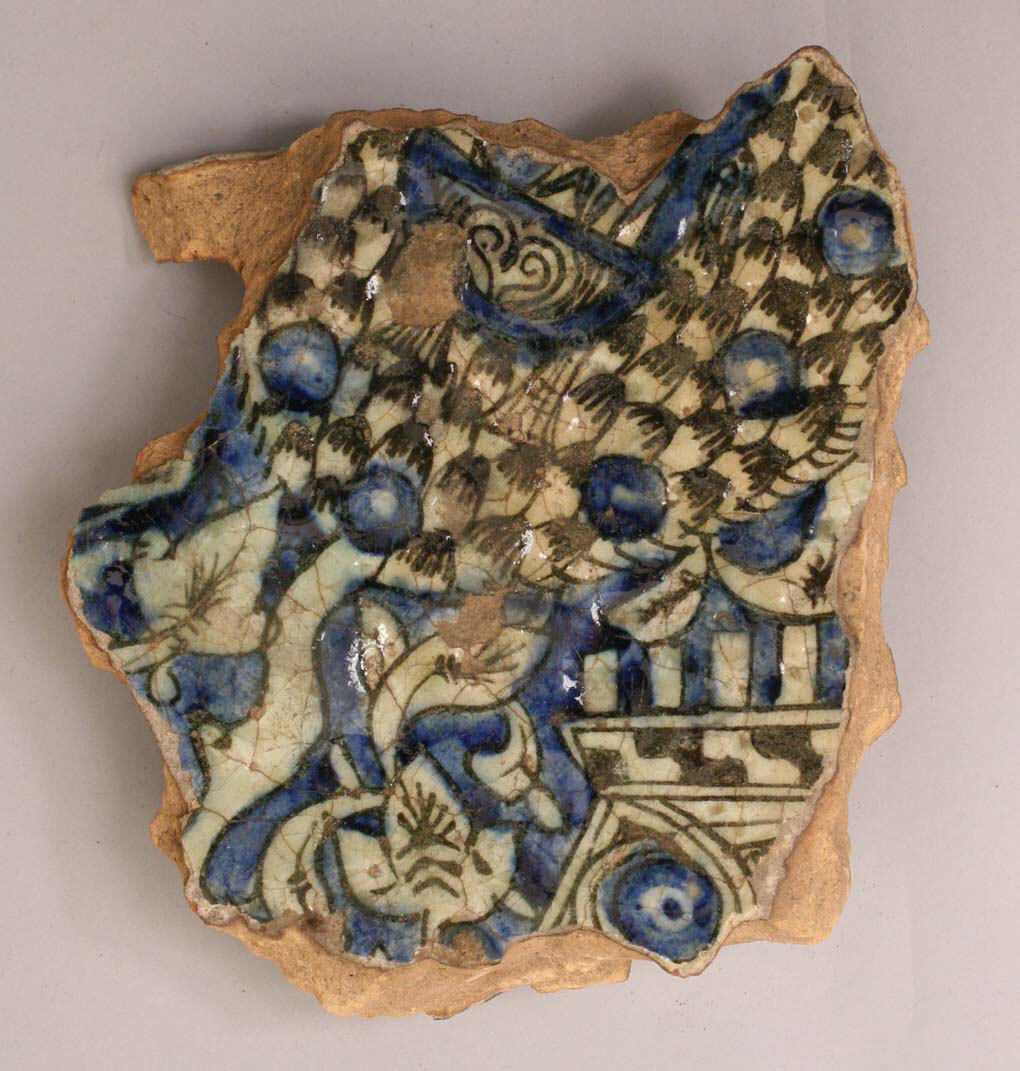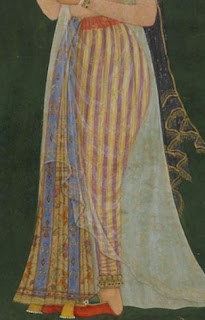When wet, the PB103 and the Buff clay have a noticeable colour difference. The buff clay looks like it resembles the 'earthenware' clays in the museums more. I guess, brownish clay (with some fe-oxide) content seems more natural to me. I've already posted my first experiment with the buff clay effect on glaze colour and noted the curious tendency of the buff to bloom with certain glazes. The items described in this post, were fired in the second batch but decoration commenced while batch one was still in the kiln.
If you've been following my blog, you'll know I started experimenting with underglazing in May / June 2011. I spent many years visiting Glaze It Studio and using their commercial bisque, underglaze and firing. The team there are lovely! Siegel (hope I spelled that right) still welcomes me when I drop in once or twice a year. Many years ago, she gave me glazes to take home so I could work on my items in peace and have been more than generous over the many years. I have, unfortunately, moved so attending their lovely studio is very challenging. I have tried a couple of similar studios in my new home town but the atmosphere is just not the same. The time and dedication it'd take to build a similar relationship with a new company is beyond me because I just want to be able to create my art.
Enter ClayMake Studio! This started as a way to broaden my ceramic skills as I'd been introduced to throwing at Pennsic by Master Simon. Interested in learning more I've signed up for a single session class and a longer 5 week wheel work class. As a result of these classes, I have plentiful bisque to work with and I can indulge in underglazing again. I do need to learn some new parameters as ClayMake fire to stoneware temperatures which, I believe, may be a lot higher than GlazeIt fire at. I'll still be returning to GlazeIt on occasion as I have yet to complete my tile project (ongoing since 2013). There are a few tiles I haven't posted about but I plan on firing the last one and doing a couple of posts about that project. It's been an interesting journey.
Fragment, 14th–15th century, Egypt, Kus, Stonepaste; underglaze blue and black; transparent, colorless glaze. Met Museum item number: 07.238.19
Anyway, that was an epic background introduction to this new project. I've previously only used / had access to white commercial bisque. This has made creating my designs really easy as many of my medieval references are underglaze on a white lead glaze background. The image above is an excellent example. The brownish nature of the clay can be seen on the edges of the fragment and the white basal colour fragments with curved edges suggesting a silicious nature. (Side note: I've been meaning to develop this fragment into a full design for a couple of years now. I've only just realised the main checkerboard is probably a tree with blue fruit globes and a blue bird while the angular design in the bottom right is a building or fence perhaps.)
Anyway, I've been able to do away with the background colour and concentrate on the decorative motifs in the past due to the bisque I used. Given the wet colour of the buff clay, I was concerned that if I continued to use buff, it'd change my underglaze colours too much. This experiment was proposed as a solution of the colour of the clay. Similar to some majolica pieces, these cups have been dipped in a white background glaze before the underglaze has been applied. (I don't remember which glaze I used, I may have screwed up and used Titanium white instead of satin white!).
Pre-firing, basal white glaze with Redwood, Citris / Saffron and Turquoise with three layers thick.
The cups were dipped in a white background glaze and then transported to my house for underglazing about a week later. As a result of this delay, all of the moisture has evaporated leaving a very very powdery basal glaze behind. I was able to easily smooth any drips in the basal glaze by rubbing a finger lightly over it. I am a little concerned that the underglaze brushes, if too hard, have lifted some of the basal layer and I may end up with specks in the underglaze colours. The cup on the left has a black outline and detail under the three coats of underglaze colour. I'm curious to see if that comes through or not. I will have to do a proper multi-coat tile experiment with these glazes because the reference tile I've currently got really doesn't show if the colour changes during firing are just due to the thinness of the glaze coat or not.
Test tiles for Buff clay, left = Titanium, right = plain with clear overglaze.
Colours left to right : Row 1. summer blue, electric blue, cobalt blue, turquoise, peacock, jade. Row 2. Redwood, Crimson, Saffron, Citris, Leaf, Brunswick. Row 3. 28A (glazeit colour), Black oxide, Light Jade. Row 4. 28 original (glaze it colour for my bathroom tiles).
I'm in two minds if I should cover everything with a clear overglaze or just hope the basal layer has sufficient silica to make the designs shine. I'm not sure how it'd look if I did dip it in Satin White as I planned on doing. The test tile on the left shows the titanium has sufficient silica to make a pleasing shine to the glaze. The titanium seems to react with the underglazes, modifying their colours and making them more speckled. I chose to use colours that seemed to work on both tiles in the hope they'd stay true. I have a fourth tile and will conduct a test with the clear overglaze with it and leave these as they are.
I used hummingbirds as a motif because if the underglaze does turnout to be titanium white, the speckle would still look good. If the streakiness seen on the previous underglaze experiment was an interaction between the clear overglaze and the underglaze rather than an overglaze application error, the humming bird motif won’t be badly impacted.

















































